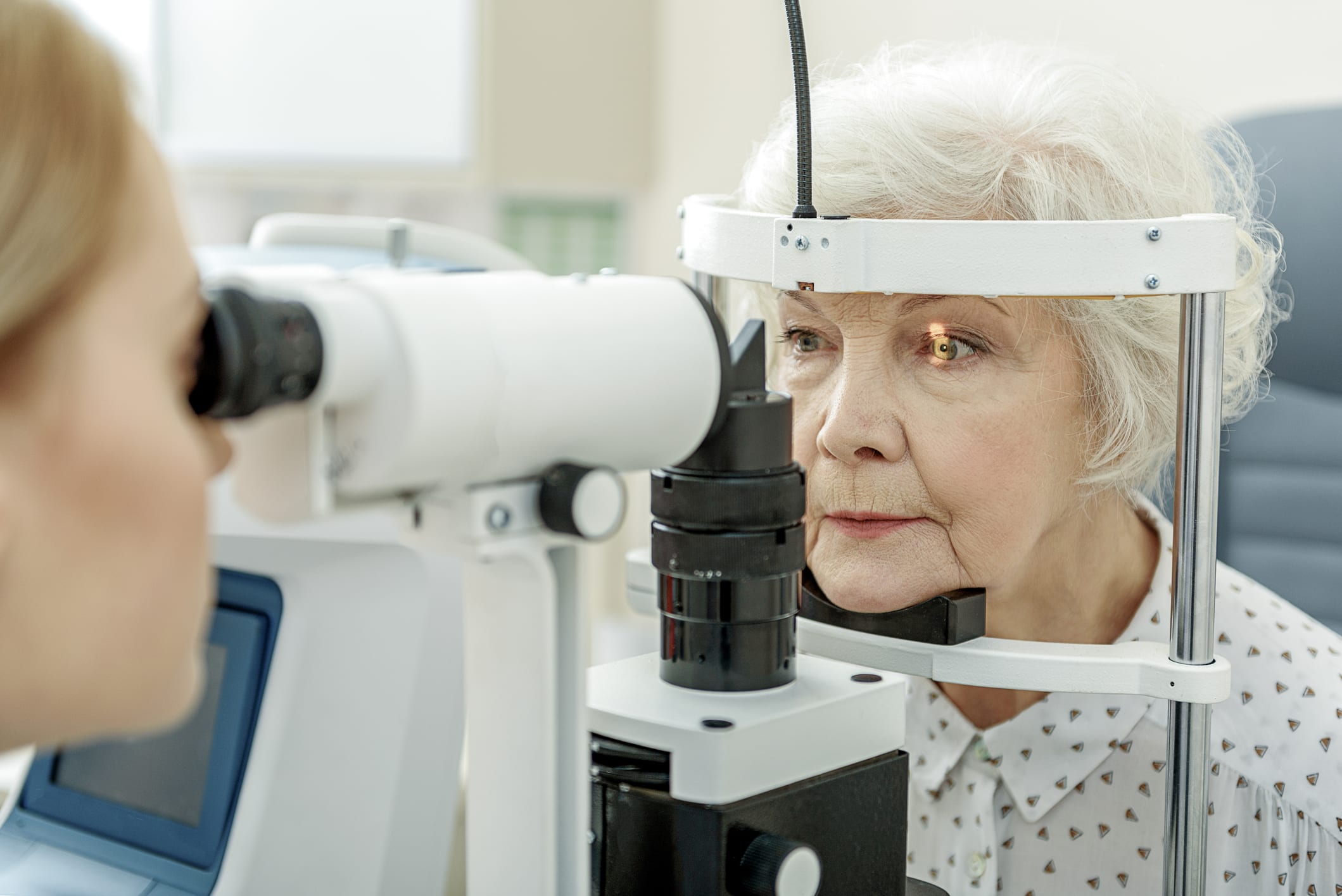Can you really have stars in your eyes? That sounds painful. How about eye candy? You’d be in big trouble if it melted. What if you’re the girl with kaleidoscope eyes? Is Paul McCartney liable? In actuality, these are merely idioms, not expressions that your eye doctor would use to describe a vision disorder. However, there are plenty of legitimate, common terms your doctor might use related to your eyes and their health. We explain some of them here:
FARSIGHTED (HYPEROPIC)
If the doctor tells you that you’re farsighted, you can clearly see objects that are far away, but nearby objects are blurred. Farsightedness occurs when your eyeball is shorter than normal, or your cornea curves too little. This causes images to focus behind the retina instead of on it. Farsightedness is easily corrected with glasses, contacts or minor surgery.
NEARSIGHTED (MYOPIC)
When you’re nearsighted, distant objects look fuzzy, and nearby objects look focused. Nearsightedness is caused by a longer-than-normal eyeball or an overly curved cornea. Light is focused in front of your retina instead of directly on it. Like farsightedness, nearsightedness is easy to correct with glasses, contact lenses or minor surgery.
ASTIGMATISM
Astigmatism is a condition that prevents the eye from consistently focusing light in all directions. The condition is induced by abnormal curvature of the lens or the eye itself. Astigmatism causes mild blurring, often accompanied with eyestrain.
VISUAL ACUITY
Visual acuity measures the accuracy of vision from a distance of 20 feet. It is tallied in equations such as 20/20, 60/20 and 20/50. Normal vision is 20/20. This means that objects are in focus when viewed from 20 feet away. If your vision is 20/50, you’ll need to stand 20 feet from something to view it as clearly as someone with normal vision can from 50 feet.
FLOATERS
Floaters are tiny blobs that appear to float across your field of vision. Floaters are usually more of a nuisance than a threat. However, if they are combined with flashing lights, this may be indicative of a serious ailment. Established 36 years ago on Florida’s West Coast, Florida Eye Specialists and Cataract Institute is staffed with unparalleled eye care professionals who can accurately assess your condition.
CONJUNCTIVITIS
Also called “pink eye,” conjunctivitis is an inflammation of the conjunctiva, the transparent tissue covering the white of the eyeball. There are many different forms of conjunctivitis, from easy-to-treat irritations to strains that resist antibiotics.
CORNEA
The cornea is the clear, dome-shaped covering on the front of your eye. It helps focus your vision and shields the eye from dirt, debris, and bacteria. The cornea provides 65 percent to 75 percent of your eyes’ focusing ability.
IRIS
The iris is the pigmented disc surrounding your pupil. Similar to a camera’s shutter, the iris regulates the amount of light entering the eye by controlling the size of your pupil’s aperture.
PUPIL
The pupil is the dark hole in the middle of your iris that focuses light on your retina. It looks black because light rays are completely absorbed by tissues within the eye.
RETINA
The retina is a membrane at the back of the eye coated with photoreceptors. These cells transform light into electrical signals that are conducted to the brain via the optic nerve.
OPTIC NERVE
The optic nerve transfers electrical impulses created by the retina to the brain, where they are interpreted as images.
MULTI-FOCAL GLASSES
Multi-focal glasses have three different focal points within one lens. They allow the wearer to see clearly three different prescription levels: near/reading, intermediate/computer, and distance/driving. The multi-focal points are designed to accommodate the individual wearer.
DRY EYE SYNDROME
Dry eye syndrome is a common eye ailment. Its symptoms include burning, itching, and irritation produced by a deficit of tears. This condition can be caused by aging, dry climates, air conditioning, and cigarette smoke. Eye drops called artificial tears are often prescribed for dry eye syndrome.
AIR PUFF MACHINE
Technically known as the tonometer, this machine releases a puff of air into your eyes. It determines the pressure in your eyeball and can detect glaucoma.
COMPUTER VISION SYNDROME
Computer vision syndrome is a common ailment of our digital age. It encompasses vision complications stemming from excessive exposure to computers, tablets and cell phones. Symptoms of computer vision syndrome include eye strain, blurred vision, dry eyes, and headaches.
These are some of the common terms that your eye doctor may use. Please note that not all of the information in this article will work for everyone, and this article is not a substitute for the actual in-person medical treatment provided by Florida Eye Specialists and Cataract Institute.
At Florida Eye Specialists and Cataract Institute, we’re driven by excellence delivered with personal service akin to that of a trusted friend. Please contact us for more information. We’ll keep your eyes’ health in focus.



